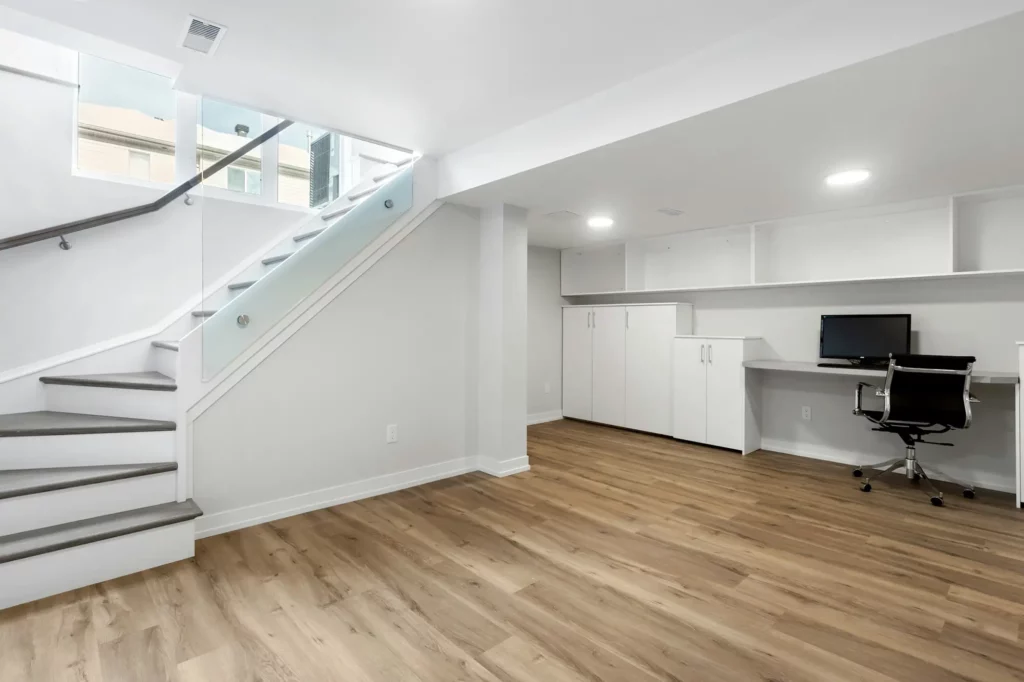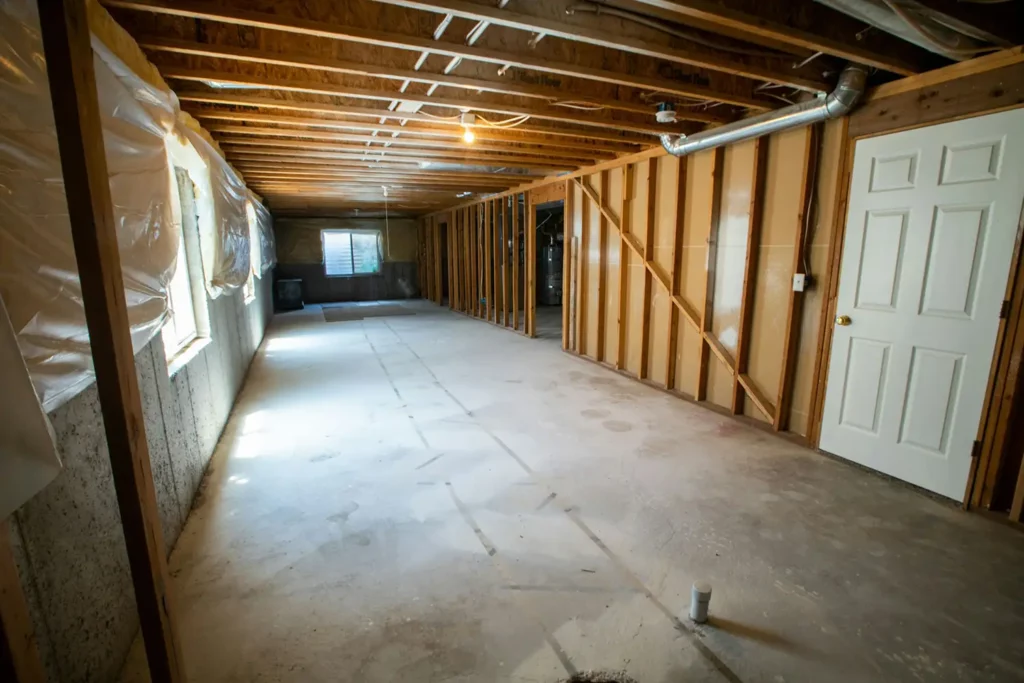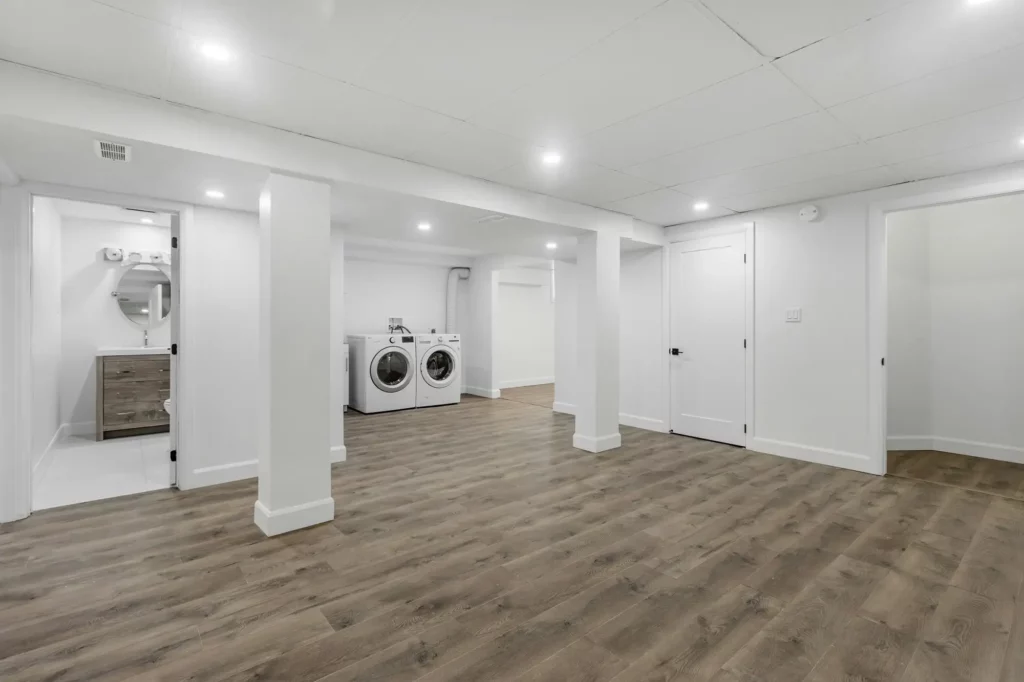
Basement renovation has become a popular trend among homeowners looking to maximize their living space without the need for a costly home addition. Once considered little more than storage areas or laundry rooms, basements are now being transformed into fully functional living spaces, including home offices, gyms, entertainment areas, or even additional bedrooms. From an architectural perspective, basement renovation presents unique challenges and opportunities that require careful planning and creative design. This article delves into the architectural considerations involved in basement renovation, exploring how these often neglected spaces can be converted into valuable and aesthetically pleasing parts of a home.
Before embarking on a basement renovation, it is crucial to have a thorough understanding of the existing structure. Basements are typically below-grade spaces, meaning they are partially or fully underground. This positioning presents specific architectural challenges, such as moisture control, structural support, and lighting. A comprehensive assessment of the existing foundation, walls, and floor is essential to identify any potential issues that could impact the renovation process.
One of the most significant architectural concerns in basement renovation is moisture management. Basements are prone to water infiltration due to their location below ground level, which can lead to issues such as mold, mildew, and structural damage. Effective waterproofing is a critical step in the renovation process and must be addressed before any aesthetic or functional improvements can be made.
Architects must assess the current state of the basement’s waterproofing and determine if additional measures are necessary. This may include the installation of a sump pump, the application of waterproof sealants on walls and floors, and the addition of proper drainage systems. Additionally, the exterior of the home may require grading to direct water away from the foundation, further protecting the basement from potential flooding.

Basements often play a crucial role in supporting the entire structure of a home. Any renovation that involves altering the layout or adding new features must take into account the existing structural framework. Architects must carefully evaluate the load-bearing walls, beams, and columns to ensure that any modifications will not compromise the integrity of the home.
For significant basement renovations, especially those altering load-bearing elements, a structural assessment is crucial. This might be necessary if your renovation, like the open-concept layouts offered by this company https://easybasements.ca/basement-renovation/, involves removing a wall. To ensure safety and maintain aesthetic appeal, architects collaborate with structural engineers to develop appropriate support solutions, such as steel beams or reinforced columns.
One of the common challenges in basement renovation is the often low ceiling height. Standard basements may have ceilings as low as seven feet, which can make the space feel cramped and uninviting. Increasing the ceiling height is a key architectural consideration that can dramatically improve the overall feel of the basement.
There are several strategies to address low ceiling height:
Excavation: If the basement floor is concrete, it may be possible to excavate and lower the floor to create more headroom. This approach, known as underpinning, involves digging out the basement floor and reinforcing the foundation. While effective, it is also one of the more expensive and labor-intensive options.
Exposed Beams: Instead of hiding the structural beams, exposing them can create a more open and industrial look. By finishing the beams with paint or stain, they can become an architectural feature rather than an obstacle.
Strategic Lighting: Proper lighting can create the illusion of a higher ceiling. Recessed lighting, cove lighting, or uplighting can all be used to draw the eye upward and make the space feel more open.
Coffered Ceilings: Installing coffered ceilings with recessed panels can add visual interest and create a perception of greater height. The panels can be designed to match the overall aesthetic of the space, whether traditional or modern.

One of the main challenges of basement renovation is the lack of natural light, which can make the space feel dark and uninviting. Architects must find creative ways to introduce natural light into the basement to enhance its livability.
Open-concept design has become increasingly popular in home renovations, and basements are no exception. By removing unnecessary walls and creating a more open layout, architects can make a basement feel larger and more functional. This approach is particularly effective in smaller basements, where maximizing every square foot is essential.
The inclusion of architectural details can elevate a basement renovation from a simple upgrade to a sophisticated living space. Thoughtful details add character and personality, making the basement feel like an integral part of the home rather than an afterthought.
When it comes to furnishing a renovated basement, architects and designers must consider the unique challenges posed by the space, such as lower ceilings, limited natural light, and potential moisture issues. Selecting the right furniture and arranging it thoughtfully can enhance the functionality and aesthetics of the basement.
The final stage of a basement renovation involves adding the finishing touches that create ambiance and style.
comments